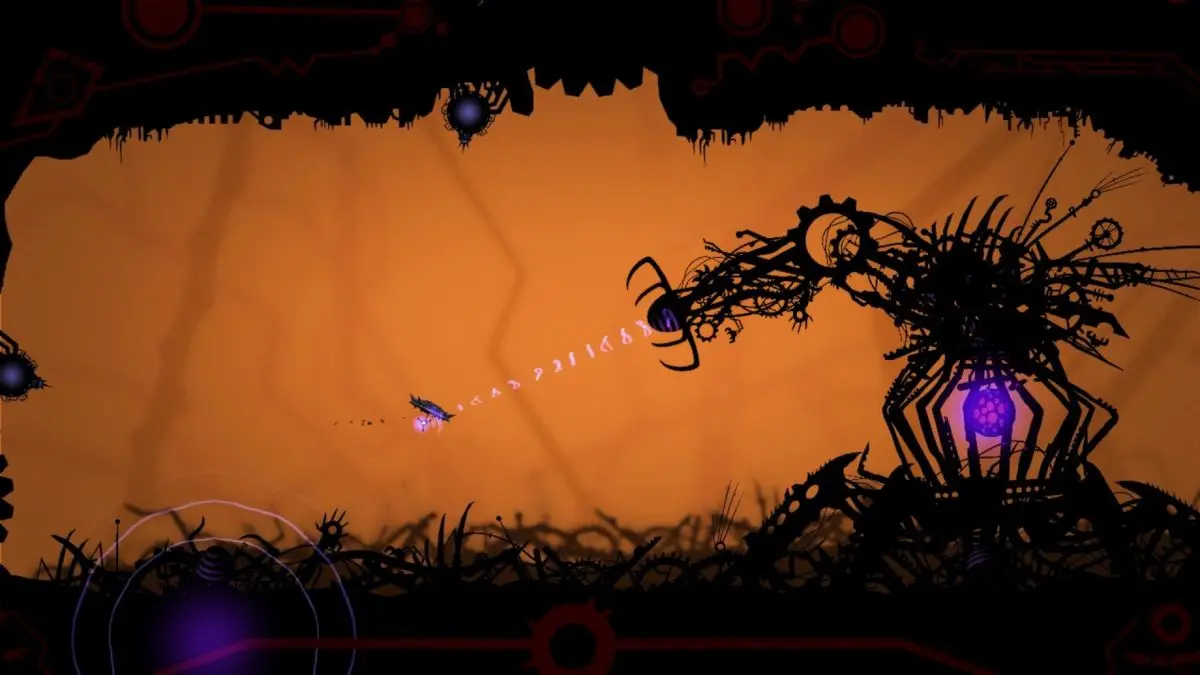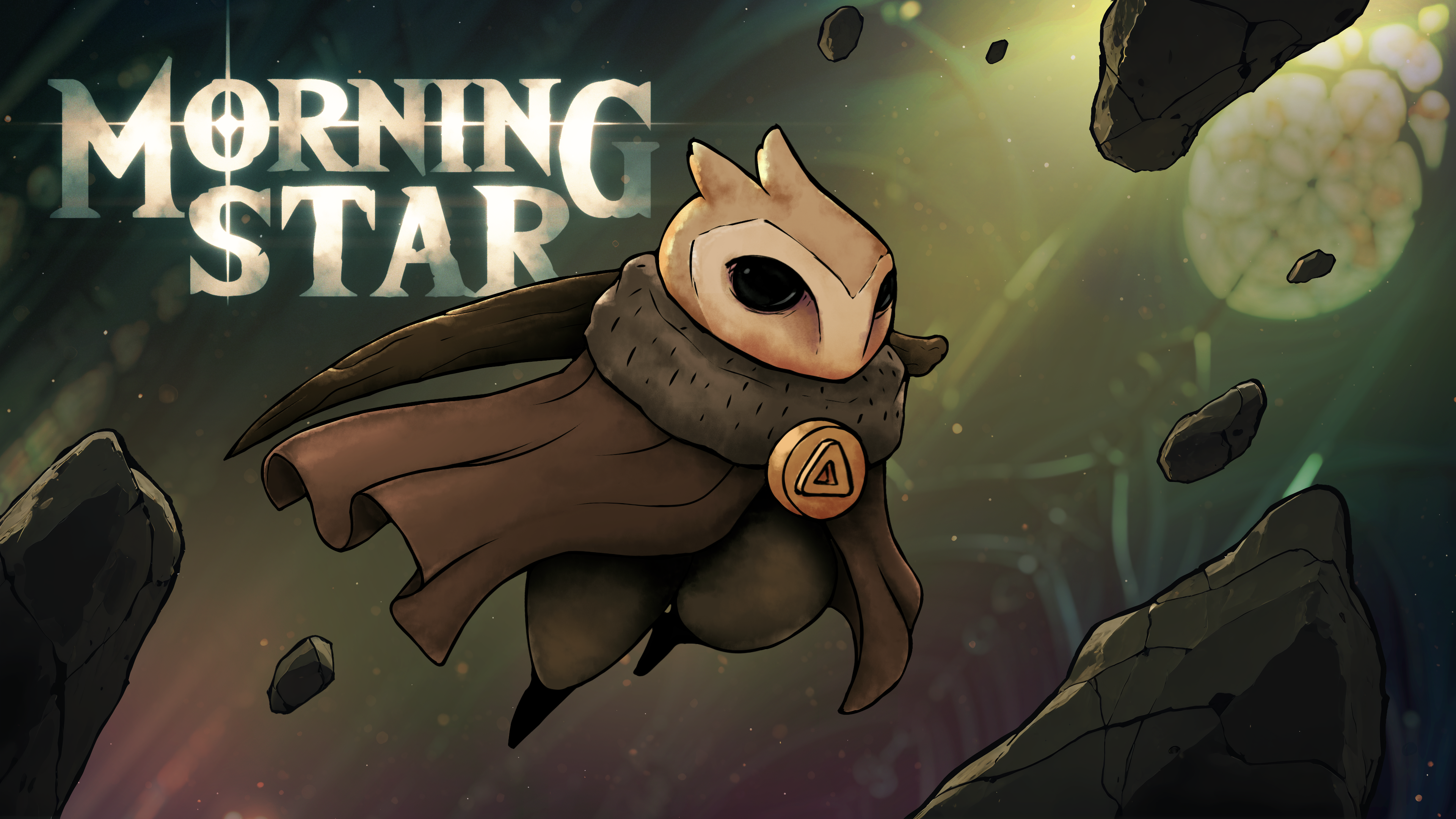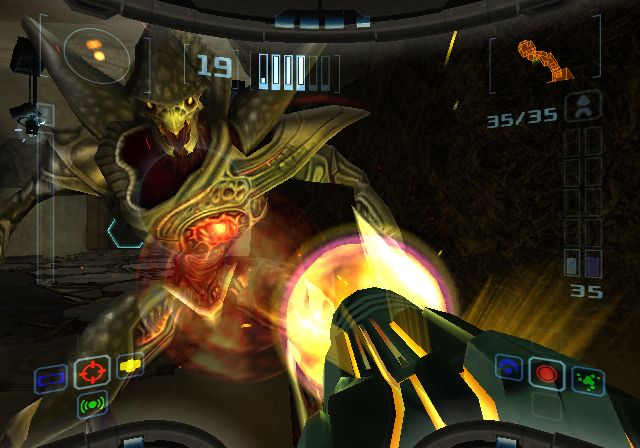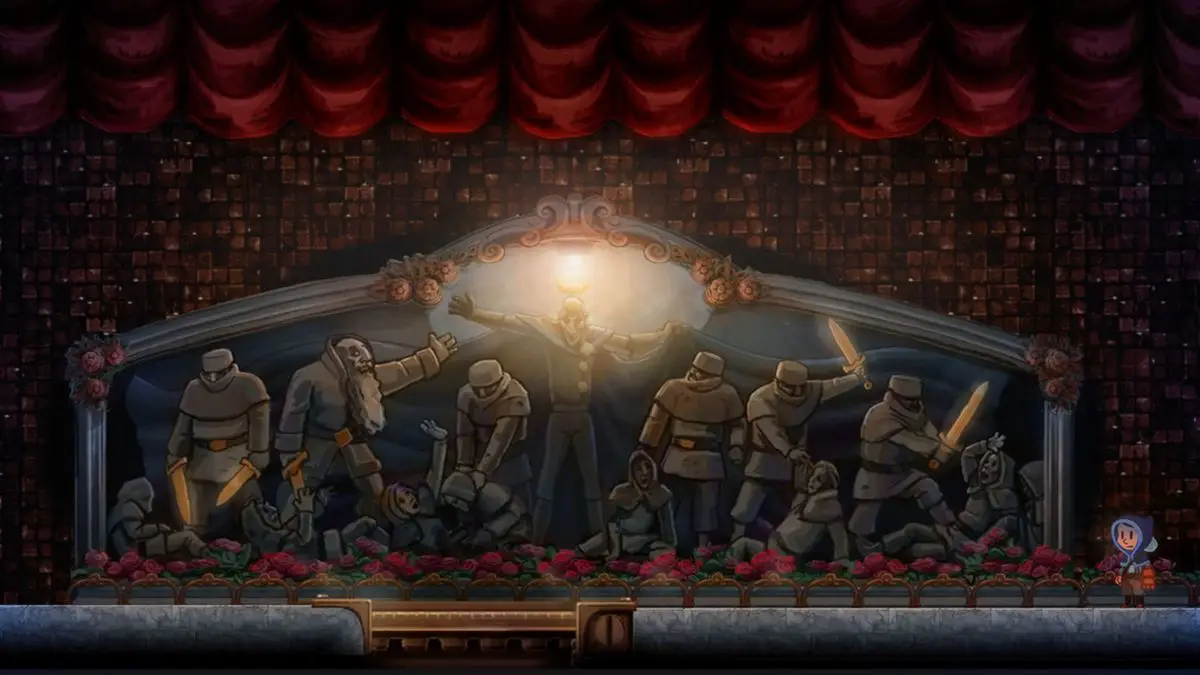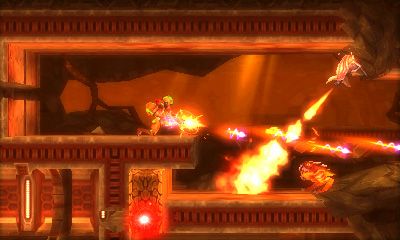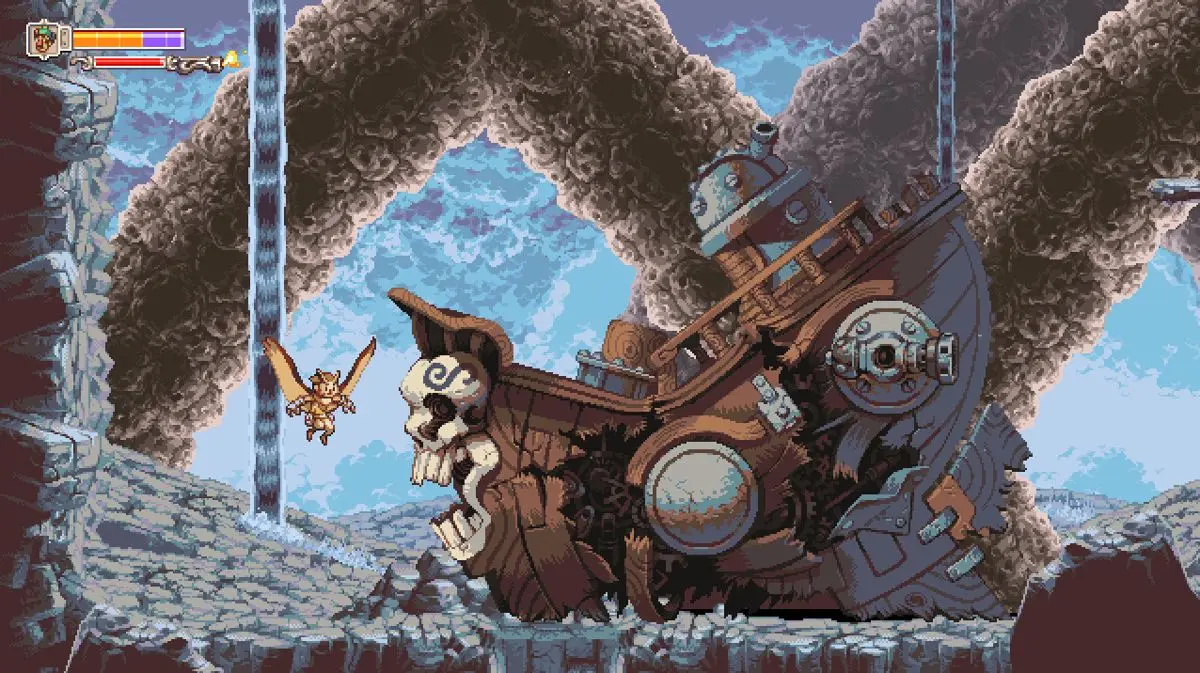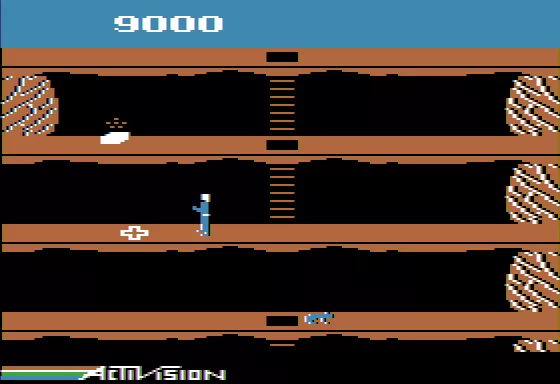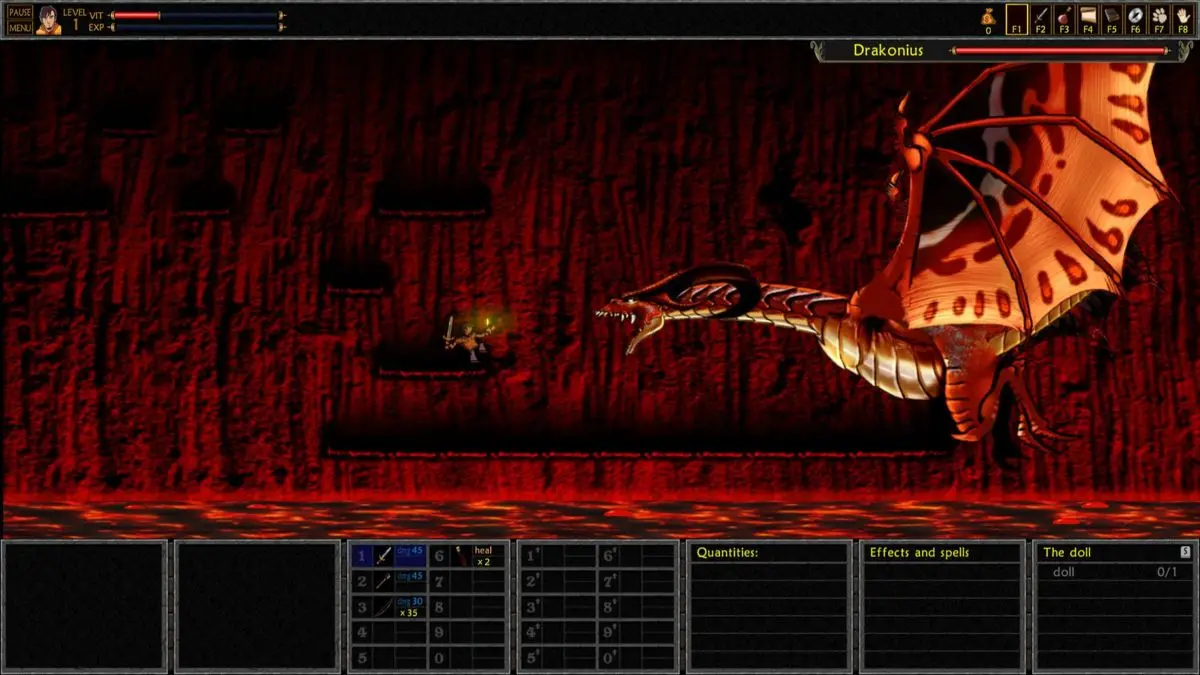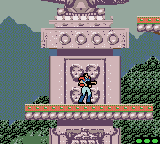Results
Insanely Twisted Shadow Planet
environmental puzzles, sci-fi, pixel art
Insanely Twisted Shadow Planet is a modern take on the classic shoot 'em up genre, developed by FuzzyEyes and published by Microsoft Studios. While it may appear simplistic at first glance, this game offers a unique and immersive experience that sets it apart from its contemporaries. One of the standout features of Insanely Twisted Shadow Planet is its distinctive art style. The game world is presented in a striking silhouette aesthetic, with intricate backdrops and enemy designs that are both visually stunning and unsettling. This approach creates a sense of mystery and foreboding, adding depth to the gameplay experience. Gameplay mechanics in Insanely Twisted Shadow Planet are not limited to traditional shoot 'em up elements. Players must navigate through intricate, maze-like levels, solving environmental puzzles and utilizing various power-ups and abilities to progress. This introduces a layer of exploration and problem-solving that complements the action sequences. One notable aspect of the game is its emphasis on narrative and storytelling. While the plot is conveyed through minimal text and visual cues, it manages to captivate players with its enigmatic and atmospheric presentation. The game's world is rich with details and lore, inviting players to uncover its secrets and piece together the underlying story. Insanely Twisted Shadow Planet also features a dynamic and reactive soundtrack that evolves alongside the gameplay. The music, composed by Steve Burke, adds an extra layer of tension and intrigue, seamlessly blending with the visuals to create an immersive and atmospheric experience. Overall, Insanely Twisted Shadow Planet offers a refreshing take on the shoot 'em up genre, combining engaging gameplay mechanics with a distinct visual style and a compelling narrative. Its attention to detail and innovative design elements make it a standout title for fans of the genre seeking a unique and memorable experience.
Morning Star
wall jump, challenging, collectibles
Morning Star is an atmospheric Metroidvania that plunges you into a mysterious world filled with both haunting darkness and breathtaking beauty. As a cloaked figure with no memory of your past, you wield a powerful weapon and embark on a journey through a vast, interconnected realm. Along the way, you'll uncover secrets, confront terrifying creatures, and piece together a story that forces you to question your identity.h
Metroid Prime 2: Echoes
shooter, sci-fi, challenging
Metroid Prime 2: Echoes, released in 2004 for the Nintendo GameCube, is a first-person adventure game that builds upon its predecessor while introducing several unique elements: 1. Dual-world mechanics: The game features Light and Dark versions of the planet Aether, with players switching between dimensions to solve puzzles and progress. 2. Beam system: Unlike the first Metroid Prime, beams don't stack. Instead, players must switch between four distinct beams (Power, Dark, Light, and Annihilator) for combat and puzzle-solving. 3. Ammunition: Dark and Light beams use limited ammo, adding a resource management aspect to combat. 4. Enhanced scanning: The scan visor now includes a zoom function for distant objects and provides more lore through Luminoth and Space Pirate logs. 5. Increased difficulty: Generally considered more challenging than its predecessor, with tougher bosses and environmental hazards. 6. Multiplayer mode: A first for the series, featuring deathmatch-style combat for up to four players. 7. Dark Samus: Introduces a new antagonist, a corrupted Phazon-based doppelganger of Samus. 8. Suits: Features the Dark Suit and Light Suit, which provide protection against dimensional hazards. 9. New abilities: Introduces the Screw Attack, Sonic Boom, and Echo Visor. 10. Atmosphere: Emphasizes isolation and a darker tone compared to the first Metroid Prime. The game's unique dimension-shifting mechanics and challenging gameplay make it stand out within the Metroid Prime trilogy.
Iconoclasts
environmental puzzles, pixel art, challenging
Iconoclasts is a metroidvania-style action-platformer developed by Joakim Sandberg, a single developer who worked on the game for over seven years. While it follows many of the genre conventions, such as nonlinear level design and ability-gated progression, Iconoclasts stands out for its compelling narrative and world-building. The game takes place in a dystopian steampunk world where religious zealots rule with an iron fist, oppressing anyone who dares to question their dogma or tinker with technology. You play as Robin, a skilled mechanic who becomes embroiled in a rebellion against the tyrannical regime. The story tackles mature themes of religion, morality, and the consequences of blind obedience, exploring them with nuance and depth rarely seen in the genre. Iconoclasts' pixel art aesthetic is stunning, with intricate details and animations that bring the world to life. The character designs are particularly noteworthy, with each NPC displaying distinct personalities through their appearances and mannerisms. The game's soundtrack, composed by Joakim Sandberg himself, is equally impressive, featuring a diverse array of tracks that complement the various environments and moods. Combat in Iconoclasts is a highlight, with Robin's wrench serving as a versatile weapon that can be charged and fired in various directions. Additionally, she can upgrade her arsenal with unique weapons and tools, encouraging experimentation and strategy. Boss battles are epic affairs, often requiring players to carefully study attack patterns and exploit environmental hazards. While Iconoclasts excels in many areas, it does have a few notable drawbacks. The game's difficulty can be unforgiving at times, with some bosses and platforming sections feeling overly punishing. Additionally, the backtracking required to progress can become tedious, especially in later stages. Overall, Iconoclasts is a remarkable achievement, showcasing the talent and dedication of its solo developer. Its thought-provoking narrative, stunning visuals, and tight gameplay make it a standout entry in the metroidvania genre, and a must-play for fans of the style.
Teslagrad
environmental puzzles, pixel art, hidden areas
Teslagrad is a visually striking 2D puzzle-platformer that draws inspiration from steampunk aesthetics and electromagnetic principles. Developed by Rain Games, the title stands out for its unique gameplay mechanic revolving around the manipulation of magnetic fields. The game's world is a beautifully hand-drawn, industrial-themed environment filled with intricate machinery and enigmatic devices. Players take on the role of a young protagonist who possesses the ability to control and redirect electromagnetic forces using a specialized glove. Puzzle-solving is at the core of Teslagrad's gameplay, and it's here that the game shines. Players must strategically utilize the magnetic glove to interact with various metallic objects and contraptions, creating pathways, activating mechanisms, and overcoming obstacles. The puzzles are cleverly designed, often requiring players to think outside the box and experiment with the magnetic forces in creative ways. One of Teslagrad's standout features is its emphasis on non-linear exploration. The game world is interconnected, with multiple paths and hidden areas to discover. Players are encouraged to backtrack and revisit previously inaccessible areas as they acquire new abilities or tools, uncovering secrets and optional challenges along the way. The game's artistic direction is truly remarkable, with a striking hand-drawn aesthetic that blends steampunk and Eastern European influences. The detailed environments and character designs are complemented by an atmospheric soundtrack that adds to the game's immersive atmosphere. While Teslagrad is a relatively short experience, it offers a memorable and thought-provoking journey. The narrative is conveyed primarily through environmental storytelling and visual cues, leaving much of the interpretation up to the player's imagination. Overall, Teslagrad is a unique and visually captivating puzzle-platformer that stands out for its innovative magnetic gameplay mechanic, intricate puzzles, and stunning hand-drawn art style. It's a game that rewards patience, observation, and creative problem-solving, making it a must-play for fans of the genre.
Metroid: Samus Returns
sci-fi, environmental puzzles, challenging
Metroid: Samus Returns is a critically acclaimed reimagining and remake of the 1991 Game Boy classic Metroid II: Return of Samus, developed by MercurySteam and Nintendo for the Nintendo 3DS. Here are some key details about the game: Gameplay and Mechanics: - Retains the 2D side-scrolling exploration and combat of classic Metroid games, but with updated mechanics and controls. - Introduces the "Melee Counter" system, allowing Samus to counterattack enemies by precisely timing her melee strikes. - Incorporates free-aim mode, allowing Samus to aim her arm cannon in any direction while standing still. - Features a revised map system with a separate map screen and the ability to place markers. Level Design and Environments: - Takes place on the planet SR388, the setting of the original Metroid II. - Reimagines and expands upon the game's environments, adding new areas and intricate level designs. - Incorporates various biomes, from lush jungle regions to treacherous caverns and depths. - Features meticulously crafted 2.5D graphics, with detailed backgrounds and foregrounds. Narrative and Storytelling: - Retells the story of Samus' mission to exterminate the Metroid species on SR388. - Expands on the narrative through cutscenes and environmental storytelling. - Introduces new AI entities, such as the Metroid-scanning robots, that shed light on the planet's history. Overall, Metroid: Samus Returns aimed to recapture the essence of classic Metroid gameplay while introducing modern refinements and enhancements, resulting in a well-received and critically acclaimed addition to the long-running series.
Owlboy
platformer, environmental puzzles, pixel art
Owlboy is a visually stunning 2D platformer that immerses players in a richly detailed, interconnected world filled with environmental puzzles, challenging platforming, and aerial combat. The game's unique mechanics, such as grappling hooks and double jumps, add depth to the exploration and combat.
Pitfall II: Lost Cavern
fantasy, challenging, hidden areas
Pitfall II: Lost Caverns, released in 1984 for the Atari 2600, is a sequel to the classic Pitfall! game. Unlike its predecessor's side-scrolling platformer gameplay, Lost Caverns introduced a new isometric perspective and a more open-ended exploration-based approach. The game features a larger, non-linear world divided into 24 interconnected caverns, each with its own challenges, hazards, and treasures to uncover. Players navigate through these caverns, searching for valuable artifacts and tools while avoiding or overcoming obstacles such as quicksand pits, scorpions, bats, and treacherous underground rivers. One of the game's standout features is its inventory system, which allows players to collect and utilize various items like lamps, shovels, and keys to access new areas or solve puzzles. The game also introduced a scoring system based on collecting treasures and artifacts, encouraging thorough exploration. Pitfall II's isometric perspective and open-ended design were innovative for its time, offering a more immersive and non-linear experience compared to its predecessor. The game's challenging gameplay, combined with its expansive world and sense of discovery, made it a beloved classic among Atari 2600 enthusiasts.
Unepic
low fantasy, environmental puzzles, challenging
Unepic is a unique take on the classic action-platformer genre, blending elements of dungeon crawlers, RPGs, and metroidvanias. Here's a more in-depth description of the game's distinctive features: 1. Nonlinear Progression: While the game starts with a linear introduction, it quickly opens up into a vast, interconnected dungeon filled with optional areas, secrets, and multiple paths to explore. Backtracking and revisiting previous areas with newly acquired abilities is essential. 2. Dynamic Loot System: Enemies drop loot in the form of weapons, armor, and consumables, allowing players to constantly upgrade their character's equipment and stats. The loot pool is procedurally generated, ensuring a diverse array of gear to discover. 3. Quirky Humor: The game's writing and dialogue are filled with self-aware, tongue-in-cheek humor, poking fun at traditional fantasy tropes and gaming clichés. The protagonist's sarcastic personality adds an entertaining layer to the narrative. 4. Puzzle Design: In addition to combat encounters, Unepic features a variety of intricate puzzles that require clever use of items, environmental manipulation, and logical thinking. Some puzzles even incorporate programming-like concepts. 5. Crafting and Customization: Players can craft various items, potions, and ammunition using materials found throughout the dungeon. Additionally, equipment can be enchanted or upgraded, allowing for customization of the character's build and playstyle. 6. Metroidvania Elements: Certain areas of the dungeon are initially inaccessible until specific abilities or items are obtained, encouraging exploration and revisiting previous locations to uncover new paths and secrets. 7. Co-op Multiplayer: The game offers a local co-op mode, allowing two players to explore the dungeon together, with each player controlling their own character and sharing loot drops. Overall, Unepic stands out for its unique blend of genres, its quirky sense of humor, and its emphasis on exploration, loot collection, and puzzle-solving within a vast, interconnected dungeon environment.
Bionic Commando: Elite Forces
grappling hook, sci-fi, post-apocalyptic
Bionic Commando: Elite Forces (1999) for the Game Boy Color is a top-down action game that serves as a spin-off to the main Bionic Commando series. While it retains the core bionic arm mechanics, the game deviates from the side-scrolling platformer genre of its predecessors. The game features a variety of missions set across different environments, ranging from urban settings to desert landscapes. Players control a member of the Elite Forces, a specialized team equipped with bionic arms, as they carry out various objectives such as rescuing hostages, sabotaging enemy installations, or eliminating high-value targets. One of the standout features of Elite Forces is its emphasis on strategic gameplay. Players must carefully plan their routes, utilize cover, and manage their limited ammunition and health resources effectively. The bionic arm remains a crucial tool, allowing players to grapple across gaps, swing over obstacles, or even pull distant objects towards them. The game's top-down perspective adds a layer of complexity to the bionic arm mechanics, as players must account for the arm's trajectory and potential obstructions in the environment. This often requires precise aiming and timing to navigate the levels efficiently. In addition to the single-player campaign, Elite Forces offers a variety of multiplayer modes, including deathmatch and capture the flag, which can be played via Game Link Cable. This feature allowed players to engage in competitive matches with friends, adding longevity and replayability to the game. While the graphics and sound are relatively simple, in line with the Game Boy Color's limitations, Elite Forces received praise for its solid gameplay mechanics and innovative approach to the Bionic Commando formula. It provided a unique spin on the series and offered a challenging experience for fans of action games on the handheld platform.
Filters
Search Term
Properties
Platforms
Tags (include)
Tags (exclude)
Get Your Game Noticed
Advertise your game with MetroidvaniaDB and reach a community of people who know exactly what they're looking for:
Your game.
Native & Banner Ad Spots
Multi-week Discounts
Game Launch Packages
Discounts for Indie Developers

